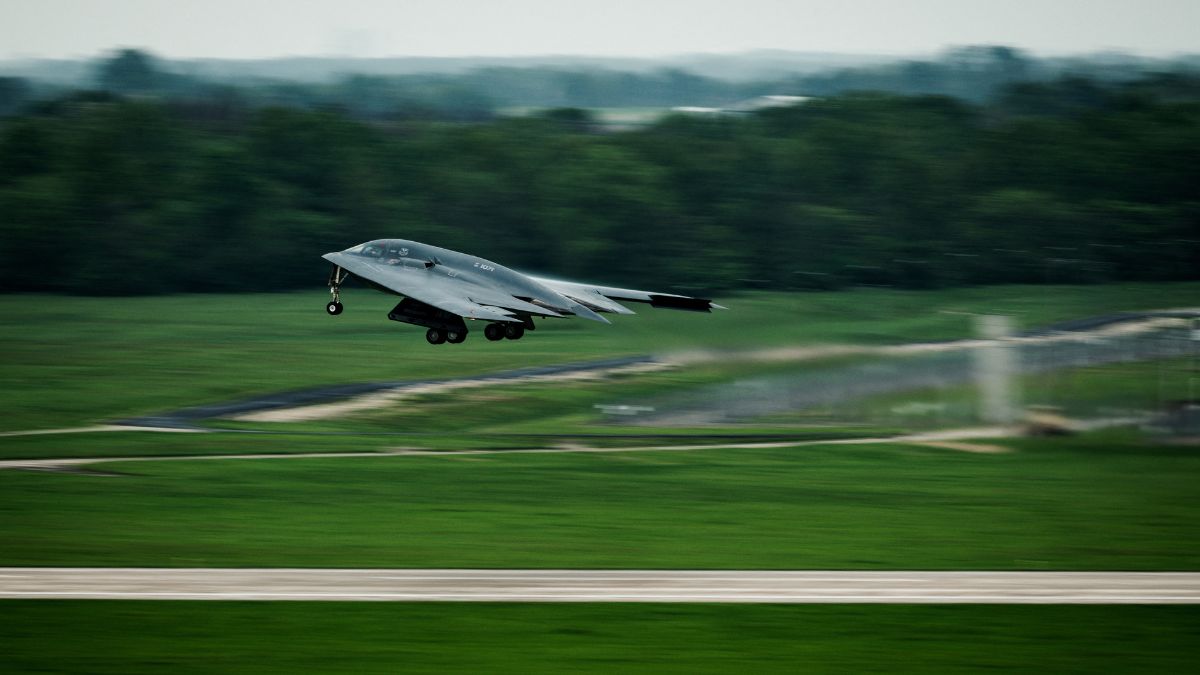The world was on edge on Sunday after the United States launched strikes on Iranian nuclear sites, stepping directly into the conflict involving Israel.
The attack led to serious concerns about what is left of Tehran’s nuclear capabilities and how its already weakened military might respond.
Read latest updates about Israel-Iran war here.
As speculation grew, some social media users claimed that the US military had used Indian airspace to carry out the strikes, known as Operation Midnight Hammer.
But the Press Information Bureau (PIB) dismissed these claims, saying Indian airspace was never used and the reports being shared are false.
ALSO READ | Decoy flights, 25 minutes, 125 aircraft: Inside US’ Operation Midnight Hammer
So, what exactly were the claims, and what did the PIB say? And how did India react to the American action against Iran?
Here’s a look at these answers and more:
Did the US use Indian airspace to attack Iran?
No, the reports doing the rounds online that claim American fighter jets used Indian airspace to launch strikes on Iran are false.
On Sunday, the PIB Fact Check unit took to X to refute the claim, calling it “FAKE” and clarifying: “Indian Airspace was NOT used by the United States during Operation Midnight Hammer.”
Several social media accounts have claimed that Indian Airspace was used by the United States to launch aircrafts against Iran during Operation #MidnightHammer #PIBFactCheck
— PIB Fact Check (@PIBFactCheck) June 22, 2025
❌ This claim is FAKE
❌Indian Airspace was NOT used by the United States during Operation… pic.twitter.com/x28NSkUzEh
Impact Shorts
More ShortsThe clarification referred to a press briefing by the Chairman of the US Joint Chiefs of Staff, General Dan Caine, who explained the alternate routes taken by the American aircraft and dismissed the speculation.
“Several social media accounts have claimed that Indian Airspace was used by the United States to launch aircraft against Iran during Operation Midnight Hammer. This claim is FAKE. Indian Airspace was NOT used by the United States during Operation Midnight Hammer. During the Press Briefing, Joint Chiefs of Staff Chair Gen Dan Caine explained the route used by US aircraft,” the Fact Check unit posted on X.
How India reacted to US airstrikes on Iranian nuclear sites
On Sunday, Prime Minister Narendra Modi spoke to Iranian President Masoud Pezeshkian to discuss the American strikes on three major nuclear sites in Iran.
During the call, PM Modi expressed deep concern over the growing tensions in West Asia and called for the need for de-escalation in hostilities.
He reaffirmed India’s stand on de-escalation, saying that dialogue and diplomacy are the only way forward.
“We discussed in detail about the current situation. Expressed deep concern at the recent escalations. Reiterated our call for immediate de-escalation, dialogue and diplomacy as the way forward and for early restoration of regional peace, security and stability,” PM Modi posted on X after the call.
Notably, the Iranian President had reached out to PM Modi following the US strikes, ANI reported citing sources.
During the 45-minute conversation, Pezeshkian gave a detailed update on the situation. He described India as a friend and partner in ensuring peace and stability in the region, and thanked PM Modi for India’s support and appeal for de-escalation, dialogue and diplomacy.
ALSO READ | Why Trump attacked Iran 2 days after giving a 2-week deadline
How the US inserted itself into Israel’s conflict against Iran
The United States carried out strikes on three nuclear facilities in Iran - Fordo, Natanz, and Isfahan, in a move that was confirmed by the Atomic Energy Organization of Iran.
Both Iran and the UN’s nuclear watchdog said there was no immediate indication of radioactive leakage at any of the locations.
General Dan Caine, Chairman of the Joint Chiefs of Staff, said that as part of the mission, seven B-2 bombers flew for 18 hours from the US to Iran to drop 14 bunker-buster bombs.
In total, the US used 75 precision-guided weapons in the operation, including more than two dozen Tomahawk missiles. Over 125 military aircraft were involved in the strikes on the three nuclear sites, Caine added.
Iran hit out at the United States for crossing what it described as “a very big red line” with its decision to target the sites using missiles and 30,000-pound bunker-buster bombs.
Initially, the Trump administration had indicated interest in reopening diplomatic channels with Tehran. However, Donald Trump , who had earlier warned of more strikes if Iran responded against US forces, later spoke about the potential for “regime change” in the country.
On his Truth Social account, Trump claimed that the strikes caused “monumental damage” to Iran’s nuclear facilities.
“We are very close to achieving our goals” in removing Iran’s nuclear and missile threats, Israeli Prime Minister Benjamin Netanyahu said.
Notably, Iran has not yet provided any details about the extent of damage caused by the strikes. Past attacks by Israel had already destroyed a centrifuge hall above ground and the power infrastructure at one of the sites, most likely disrupting the electricity supply.
With inputs from agencies


)

)
)
)
)
)
)
)
)



